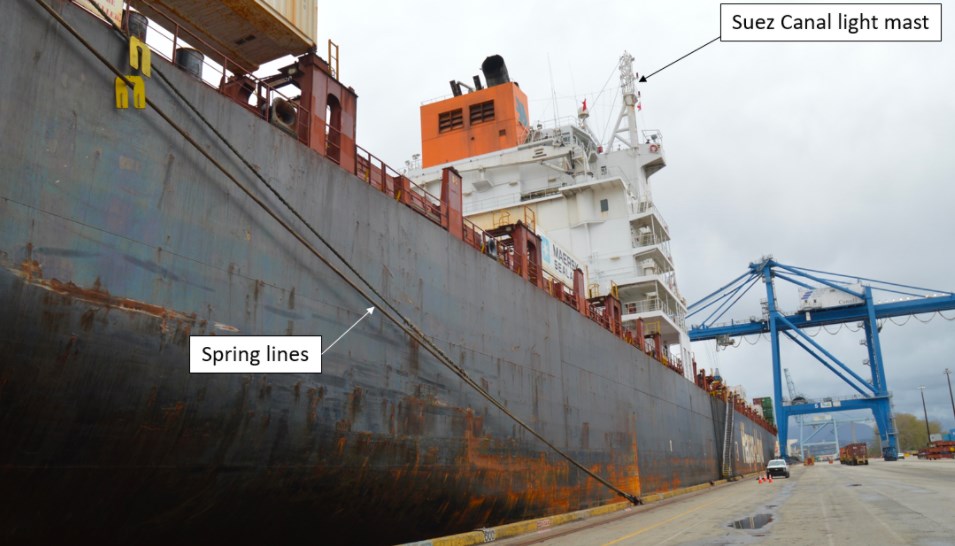Port crane operation protocols at Fraser Surrey Docks have been modified in the wake of a container freighter mast striking a crane in April 2019, Canada’s Transportation Safety Board (TSB) says.
The 294-metre, Hong Kong-flagged Oakland Express, a Hapag-Lloyd-chartered vessel, has Suez Canal light mast extending 53.75 metres above the keel. The mast’s outermost portions are about one metre inboard of the vessel’s starboard side. The majority of container vessels have Suez Canal lights incorporated into their main mast, which is typically located on the vessel’s centreline.
The Oakland Express was lined up for berthing with assistance of two tugs. Just before berthing, the mast struck a crane rail.
The ship, which had a capacity of 4,890 20-foot equivalent unit containers, was pulled from the berth and the crane repositioned clear of the vessel.
The light fixture on the Suez Canal light mast sustained damage, and the crane rail was bent over a distance of about four metres.
Two cranes were positioned to handle cargo from vessel containers.
In March 2016, Pacific Pilotage Authority had issued a notice to industry about “the need for terminals to keep cranes at the midpoint or as far away from arriving or departing vessels as practicable and in the boom-up position,” the June 1 TSB report said.
However, when crane booms are up, they are not perpendicular to the dock, resulting in a vertical restriction of 45.15 metres immediately adjacent to the berth.
Most conventional container vessels do not have a mast near the side of the ship and are not impeded by this restriction. However, the restriction does affect the Oakland Express and its sister vessels when they are berthed starboard-side alongside because of the proximity of the Suez Canal light mast to the side of the ship,” the TSB report said.
As a result of the incident, the TSB said, the terminal has:
revised crane positioning procedures prior to berthing and unberthing vessels:
initiated a requirement for the superintendents to be present at the berth and equipped with VHF radiotelephones to communicate with pilots for all vessel movements;
reviewed the incident with the Fraser River pilots and started bi-annual meetings to discuss areas of improvements and future plans, and;
revised the procedure for when a crane is passing a vessel’s mast or superstructure while transiting along the berth.
The ship is one of seven built in 2000 in Korea by Hyundai Heavy Industries.
The TSB said the seven “have a special consideration with respect to air draft because of the proximity of the Suez Canal light mast to their shipside.
“Masters on these vessels must be mindful of this consideration and proactively share this information with pilots and terminals,” the report said.
@jhainswo



